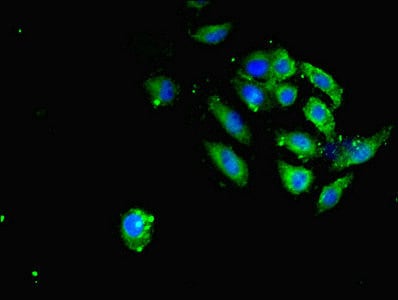Anti-SAV1 antibody (ab230265)
Key features and details
- Rabbit polyclonal to SAV1
- Suitable for: IHC-P, ICC/IF
- Reacts with: Human
- Isotype: IgG
Overview
-
Product name
Anti-SAV1 antibody
See all SAV1 primary antibodies -
Description
Rabbit polyclonal to SAV1 -
Host species
Rabbit -
Tested applications
Suitable for: IHC-P, ICC/IFmore details -
Species reactivity
Reacts with: Human
Predicted to work with: Mouse, Rat
-
Immunogen
Recombinant fragment corresponding to Human SAV1 aa 1-250.
Database link: Q9H4B6 -
Positive control
- IHC-P: Human endometrial cancer and kidney tissue. ICC/IF: A549 cells.
-
General notes
The Life Science industry has been in the grips of a reproducibility crisis for a number of years. Abcam is leading the way in addressing this with our range of recombinant monoclonal antibodies and knockout edited cell lines for gold-standard validation. Please check that this product meets your needs before purchasing.
If you have any questions, special requirements or concerns, please send us an inquiry and/or contact our Support team ahead of purchase. Recommended alternatives for this product can be found below, along with publications, customer reviews and Q&As
Properties
-
Form
Liquid -
Storage instructions
Shipped at 4°C. Store at +4°C short term (1-2 weeks). Upon delivery aliquot. Store at -20°C long term. Avoid freeze / thaw cycle. -
Storage buffer
pH: 7.30
Preservative: 0.02% Sodium azide
Constituents: PBS, 50% Glycerol (glycerin, glycerine) -
 Concentration information loading...
Concentration information loading... -
Purity
Immunogen affinity purified -
Clonality
Polyclonal -
Isotype
IgG -
Research areas
Images
-
A549 (human lung carcinoma cell line) cells stained for SAV1 (green) using ab230265 at 1/100 dilution in ICC/IF. Secondary used is an Alexa Fluor®488-conjugated Goat Anti-Rabbit IgG (H+L).
-
 Immunohistochemistry (Formalin/PFA-fixed paraffin-embedded sections) - Anti-SAV1 antibody (ab230265)
Immunohistochemistry (Formalin/PFA-fixed paraffin-embedded sections) - Anti-SAV1 antibody (ab230265)Paraffin-embedded human kidney tissue stained for SAV1 using ab230265 at 1/100 dilution in immunohistochemical analysis.
-
 Immunohistochemistry (Formalin/PFA-fixed paraffin-embedded sections) - Anti-SAV1 antibody (ab230265)
Immunohistochemistry (Formalin/PFA-fixed paraffin-embedded sections) - Anti-SAV1 antibody (ab230265)Paraffin-embedded human endometrial cancer tissue stained for SAV1 using ab230265 at 1/100 dilution in immunohistochemical analysis.










